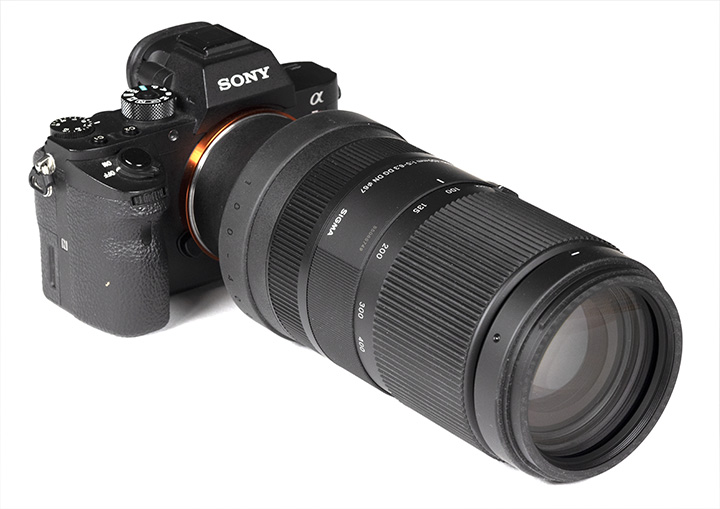Review by Klaus Schroiff, published December 2021
Introduction
The Sigma 100-400mm f/5.6-6.3 DG DN OS is the mirrorless camera version of the highly popular Sigma 100-400mm f/5.6-6.3 DG OS HSM. While very similar in shape, there are some subtle differences – including a modified optical formula. Unlike the older lens, it is at least possible to attach an (optional) tripod mount. The HSM has been replaced by a stepping motor which is more aligned to the use on mirrorless cameras. The good news is the pricing only increased marginally to around 950 USD/EUR both in Sony E- and L-mount.
It may come as a little surprise but the Sigma 100-400mm f/5.6-6.3 DG DN OS is actually slightly longer than the DSLR design. At longer focal lengths there isn’t much you can do about the size unless you start using e.g. fresnel lenses which come which their own challenges. The build quality seems to have improved a bit specifically near the mount where Sigma has replaced the plastic rear tube with a metal one. The weather sealing is still rather basic with just a gasket at the mount. As usual, the lens uses an extending zoom mechanism towards longer focal lengths. Besides the zoom ring, you can also push/pull the inner tube at the front. Sigma calls this a “Dual-action” zoom mechanism. A transport lock is also available at the 100mm setting. The focus ring operates smoothly. A deep barrel-shaped hood is part of the package.

The stepping motor used for auto-focusing is pretty fast and noiseless. You can also control the AF using a dedicated AFL button. The optical image stabilizer (OS) offers a claimed gain of up to 4 f-stops. As usual, the real-world efficiency will vary on a number of external factors such as your coffee level, focus distance, or simply because it’s windy. Besides the standard stabilization mode, there’s also a dedicated mode for panning.
| Specifications | |
|---|---|
| Optical construction | 22 elements in 16 groups, with 1x FLD, 4x SLDs elements |
| Number of aperture blades | 9 (rounded) |
| min. focus distance | 112(W)-160(T)cm (max magnification 1:4.1) |
| Dimensions | 86×199.2mm |
| Weight | 1140g |
| Filter size | φ67mm/td> |
| Hood | barrel-shaped, bayonet mount, supplied |
| Other features | transport lock, Dual action zooming, OSS, optional tripod mount, AFL button |
Distortion
The Sigma 100-400mm f/5-6.3 DG DN OS Contemporary shows comparatively high, pincushion-type image distortions in RAW images. They are still quite low at 100mm but increase to medium levels from the middle range.


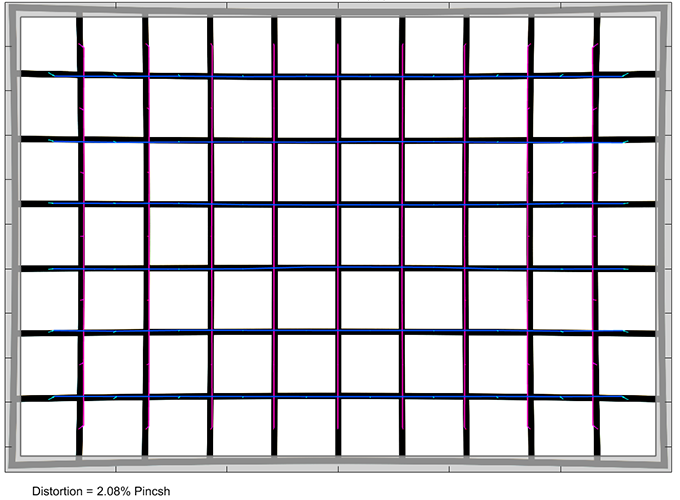
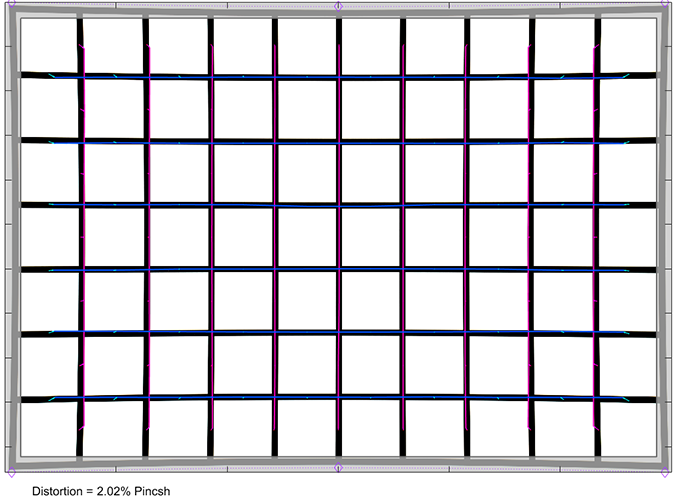
With activated image auto-correction, the distortions are perfectly corrected as you can see below.
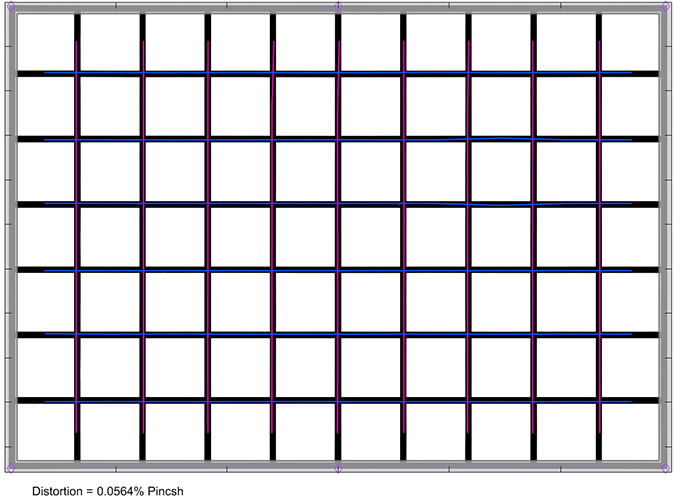
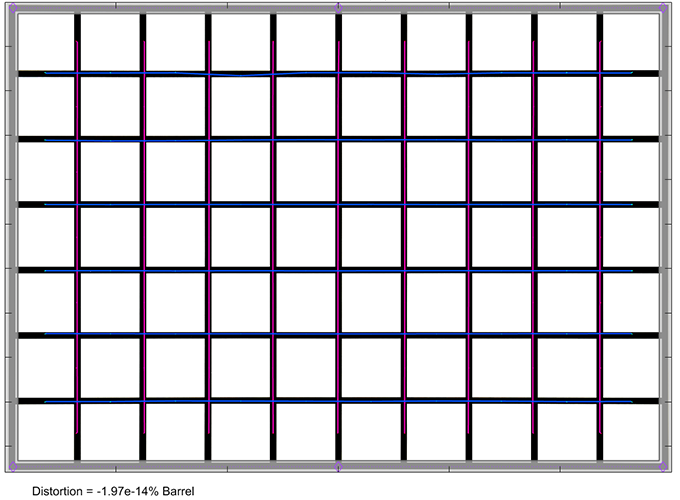
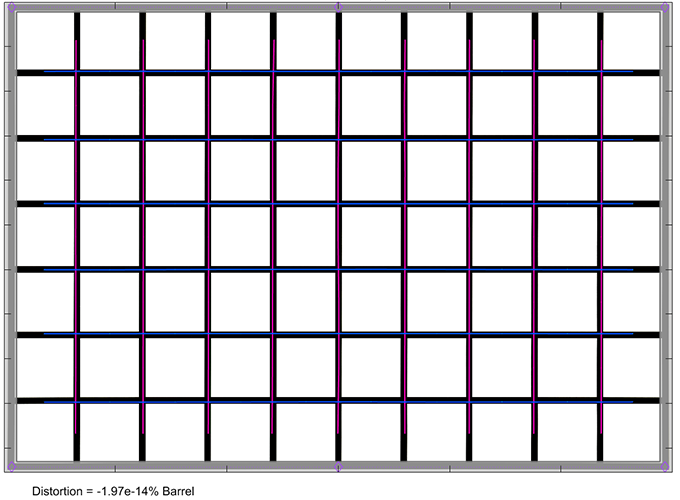

Vignetting
The RAW vignetting is higher than average for a lens in this class. This is probably related to the rather small diameter of the front element. A peak of ~1.7 EV is quite visible at the longer end and maximum aperture. Stopping down reduces this, of course.

With activated image auto-correction this is reduced to sub-0.9EV at maximum aperture. This can still be noticeable in certain scenes but it’s acceptable.
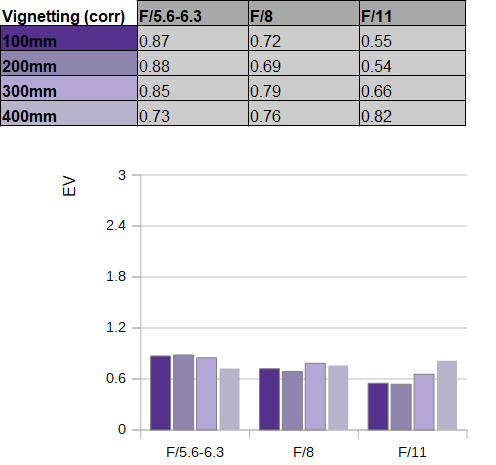
MTF (resolution)
The Sigma lens produced decent resolution figures in the MTF lab. The peak performance isn’t up there with the best but it’s commendable nonetheless. At 100mm the center quality is very good to excellent at f/5 and the outer image field is easily on a good level. The center quality doesn’t improve when stopping down but there’s a slight gain in quality at the image borders. The best quality is reached in the middle part of the zoom range with very good results across the image field at f/6.3 and f/8. Unsurprisingly, there’s a drop in quality at 400mm. The center performance remains high at f/6.3 and the borders are still good but the corners fall behind. Stopping down improves the broader center zone.
The field curvature is low. The centering quality of the tested sample was good overall.
Please note that the MTF results are not directly comparable across the different systems!
Below is a simplified summary of the formal findings. The chart shows line widths per picture height (LW/PH) which can be taken as a measure for sharpness. If you want to know more about the MTF50 figures you may check out the corresponding Imatest Explanations.

Chromatic Aberrations (CAs)
Lateral CAs (color shadows at the image borders) are very low in the low to mid-range. They increase slightly at 400mm but remain unobtrusive. Lateral CAs can be auto-corrected without any relevant loss in image quality anyway.

Bokeh
The Sigma 100-400mm f/5-6.3 DG DN OS Contemporary may not be the fastest lens around but thanks to its long focal length, it’s still capable of producing a shallow depth-of-field in many scenes – thus the quality of the out of focus blur (bokeh) remains an important criterion.
Out-of-focus highlights are comparatively nicely rendered with a fairly clean inner zone. There’s a bit of outlining at the edge of the discs which is emphasized the more you stop down. The circular disc shape is maintained at the maximum aperture as well as f/8 with minor traces of the more edgy aperture showing up at f/11.

The following samples illustrate the highlight rendering across the image field (taken around 135mm here). Circular highlights are maintained in a fairly broad central zone before deteriorating towards the borders and corners. Stopping down broadens the “good” zone at f/8 and, more so, at f/11.
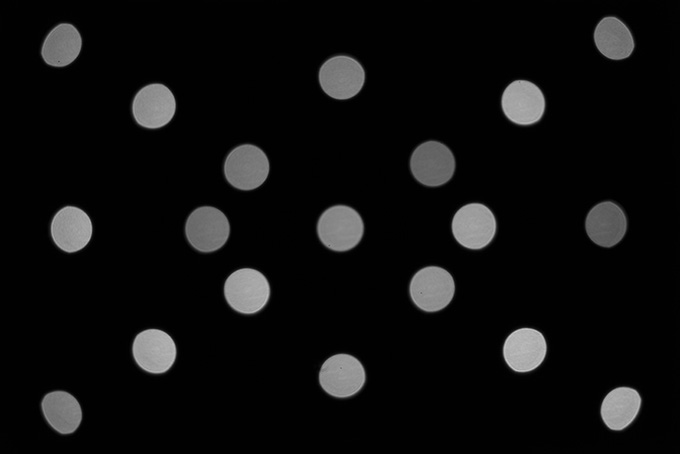

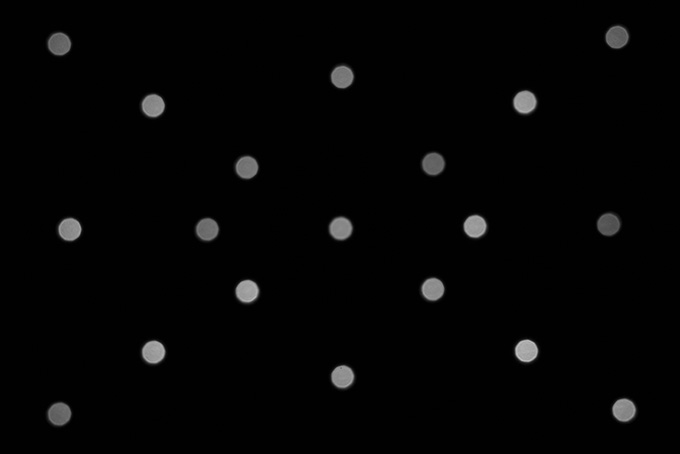
The general rendition in the focus transition zones isn’t perfect but still good for this kind of lens. You may notice that the background blur (shown to the left below) isn’t symmetrical at harsh contrasts but it is quite smooth. The rendering in the foreground is slightly harsher with a more distinct “shadow”.

Sample Images
Competition
The Sigma 100-400mm f/5-6.3 DG DN OS Contemporary (shown to the left) sits in a bit of a sweet spot. It is far more affordable than the Sony FE 100-400mm f/4.5-5.6 OSS GM (center below) and even the Sony FE 70-300mm f/4.5-5.6 OSS G (not shown). There are longer lenses like the Tamron 150-500mm f/5-6.7 Diii VC VXD (to the right below) which are certainly sexier but besides being also more expensive, they are also much heavier. Optically the Sigma lens should be “good enough for most”. The Sony 100-400mm GM, the Tamron, and the Sony FE 200-600mm f/5.6-6.3 OSS G may be a tad sharper still if you want to go for the max though.

Image courtesy of camerasize.com
The Sigma 100-400mm f/5-6.3 DG DN OS Contemporary is a subtle improvement over the older DSLR version - both optically as well as mechanically. The image quality is primarily better at the wide end of the zoom range with a much higher sharpness in the outer image field. The high quality is maintained in the middle range. At 400mm, the center sharpness remains very good but there's a drop in corner performance. Stopping down helps to broaden the really sharp zone. Keep in mind that the resolution has its limits because of the inevitable diffraction at f/6.3. Lateral CAs are low. Uncorrected image distortions are fairly high for a tele-zoom lens with a peak of 2% (pincushion style) at longer settings. This is, of course, not a drama with activated auto-correction. This also helps with vignetting which otherwise would be very visible at the long end as well. The quality of the bokeh is decent for a zoom lens albeit primes still rule the scene in this respect.
The build quality of the Sigma lens is quite impressive for a consumer-grade lens. Plastics have been replaced by metal near the mount and there's at least a mount-gasket providing some shielding against dust and moisture. Few will probably take advantage of this but it's nice that Sigma provides the option of attaching a tripod mount. The AF is snappy and combined with the effective image stabilizer, it's fun to use in the field - also because it's relatively compact and lightweight for such a lens reaching 400mm.
The decent optical- and mechanical qualities don't even cost a fortune either and, as so often with Sigma lenses, the 100-400mm f/5-6.3 DG DN OS Contemporary is an obvious value king. If you want higher quality, you'll have to invest quite a bit more.
-
Optical Quality
-
Build Quality
-
Price / Performance


